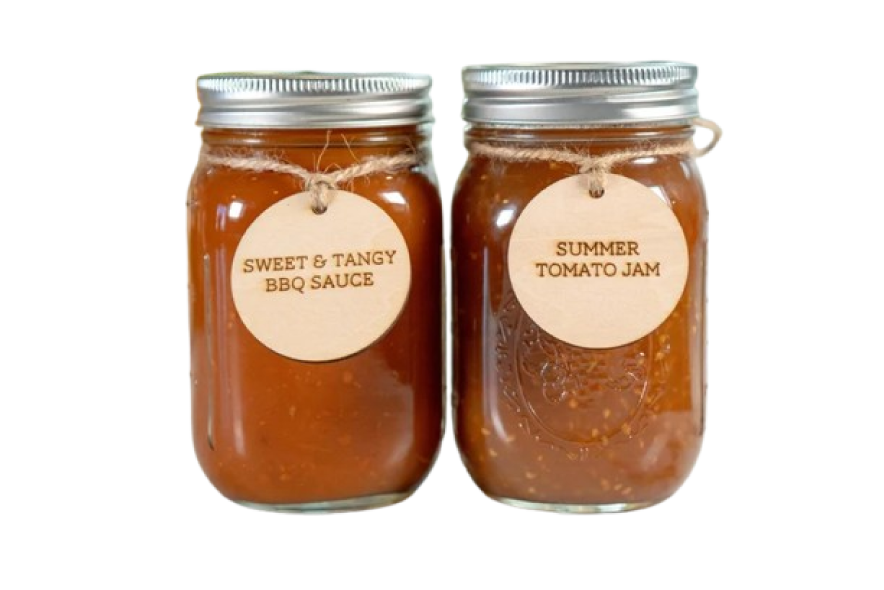Removing label glue from mason jars can be a bit tricky, especially when dealing with stubborn adhesives. Stickers For Mason Jars often leave behind residue that can be challenging to clean. However, there are several effective methods you can use to remove this glue and restore your jars to their original condition. This guide will walk you through various techniques to tackle label glue removal effectively.
Why Removing Label Glue is Important?
Practical Reasons
Firstly, removing label glue from mason jars is essential for maintaining their functionality and appearance. Mason jars are commonly used for storage, crafting, and organizing. If the adhesive residue is not removed, it can affect the jar’s usability and overall look. Therefore, cleaning the jars ensures they remain practical for their intended use.
Aesthetic Considerations
Secondly, clean mason jars look more appealing. Whether you are using them for home decor or gifting, a residue-free jar is more attractive. Moreover, labels and glue marks can detract from the jar’s appearance, making it less desirable for decorative purposes. Thus, removing these marks enhances both the functionality and aesthetics of your jars.
Methods to Remove Label Glue
Soaking in Warm Soapy Water
One of the simplest methods to remove label glue is soaking the jars in warm soapy water. Start by filling a basin or sink with warm water and adding a few drops of dish soap. Place the mason jars in the soapy water and let them soak for about 30 minutes. As the water loosens the glue, you can use a sponge or cloth to gently scrub away the residue.
Additionally, for stubborn glue, you might need to use a bit of elbow grease. While the soapy water will help to soften the adhesive, some glue may require extra scrubbing. This method is effective for most labels and is an easy first step in the cleaning process.
Using Baking Soda and Oil
Another effective method involves using a combination of baking soda and oil. Begin by mixing equal parts baking soda and cooking oil, such as olive oil, to create a paste. Apply the paste directly to the glue residue on the mason jar. Let it sit for about 15 minutes to allow the mixture to break down the adhesive.
Subsequently, use a sponge or cloth to scrub the area. The baking soda acts as a mild abrasive, helping to lift the glue, while the oil helps to dissolve it. After removing the paste and residue, wash the jar thoroughly with warm soapy water to remove any remaining oil and baking soda.
Applying Vinegar
Vinegar is another useful household item for removing label glue. Start by soaking a cloth or sponge in white vinegar. Apply the vinegar-soaked cloth to the glue residue and let it sit for about 10 minutes. As the vinegar works to break down the adhesive, gently scrub the area with a cloth or sponge.
Furthermore, vinegar is an effective solvent that can help dissolve the glue without harsh chemicals. After scrubbing, rinse the jar with warm water and dish soap to remove any vinegar smell and residue.
Using Commercial Adhesive Removers
For more stubborn glue residue, commercial adhesive removers may be necessary. These products are specifically designed to tackle various types of adhesives. Follow the instructions on the product label for the best results. Typically, you will need to apply the remover to the glue, let it sit for a specified time, and then wipe it away.
Moreover, these products can be very effective, but it’s essential to use them in a well-ventilated area and avoid prolonged skin contact. Always read and follow the safety guidelines provided with the adhesive remover to ensure safe use.
Using Rubbing Alcohol
Rubbing alcohol can also be effective for removing label glue. Apply a small amount of rubbing alcohol to a cotton ball or pad and gently rub it on the glue residue. Allow the alcohol to work for a few minutes, then wipe the area with a clean cloth. This method is useful for removing glue that has been resistant to other cleaning methods.
Additionally, rubbing alcohol is a quick-drying solvent that evaporates fast, making it a convenient choice for adhesive removal. After cleaning the jar, wash it with warm soapy water to remove any remaining alcohol residue.
Tips for Effective Glue Removal
Test on a Small Area
Before applying any cleaning solution to the entire jar, test it on a small, inconspicuous area first. This helps ensure that the method will not damage the jar or its finish. Testing prevents potential issues and allows you to choose the best cleaning approach for your specific jar.
Be Patient
Removing label glue can sometimes take time, especially if the adhesive is particularly stubborn. Be patient and allow each cleaning method to work for the recommended time. Rushing the process may result in incomplete removal or damage to the jar.
Use Gentle Scrubbing
When scrubbing the glue, use a gentle approach to avoid scratching or damaging the jar’s surface. Opt for soft sponges or cloths rather than abrasive scrubbers. By using gentle pressure, you ensure that the jar remains in good condition after cleaning.
Conclusion
In conclusion, removing label glue from mason jars involves choosing the right method based on the type of adhesive and the condition of the jar. By using techniques such as soaking in warm soapy water, applying baking soda and oil, or using vinegar and rubbing alcohol, you can effectively clean your jars. Commercial adhesive removers offer an additional option for more stubborn residues. Ultimately, maintaining clean mason jars enhances their functionality and appearance. For those seeking high-quality printing solutions and packaging options, exploring Packaging Companies In Canada can provide valuable resources and services. These companies can offer additional insights and solutions for labeling and packaging needs, ensuring that your jars remain in excellent condition.
